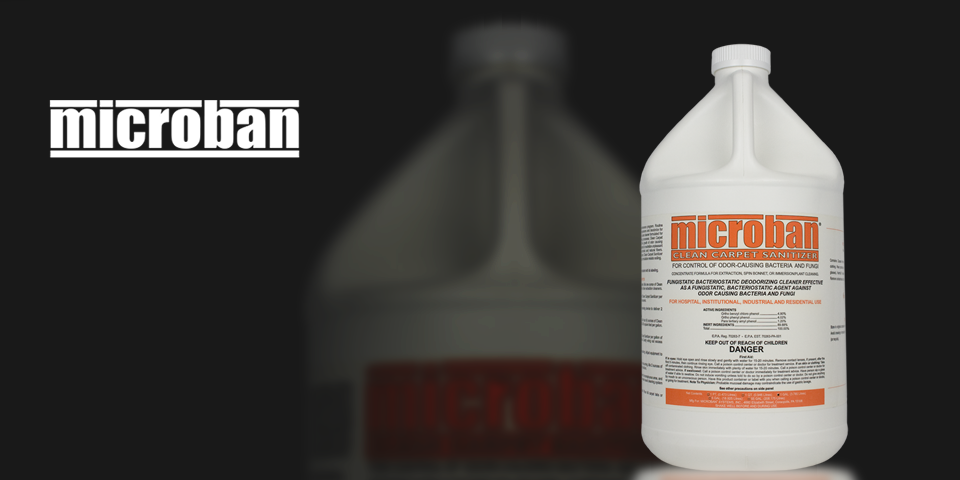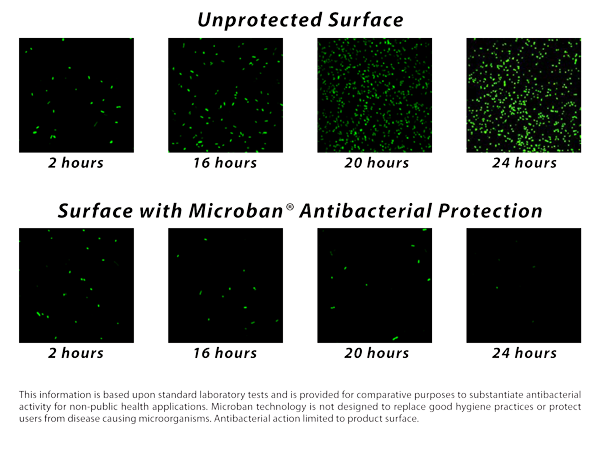Why is Microban important in your cleaning?
One application kills allergy- and disease-causing germs, fungi, mold, and mildew. It kills odor-causing bacteria, including gram negative bacteria – the bacteria encountered in sewage backups and toilet overflow situations. Microban also provides long-lasting residual protection, so it keeps working, preventing germs and fungi from growing on surfaces long after application. Major insurance companies recognize Microban for treatment on water losses. When you get your flooring cleaned, an antimicrobial treatment is just as important as your protector!

6 reasons why Microban is superior to bleach
- Bleach is quite caustic and irritating. Microban has a neutral pH and is non-corrosive.
- Bleach can corrode metals and damage fiber dyes. Micorban will not damage these surfaces.
- Bleach doesn’t provide residual protection after initial application. Micorban has both bacteriostatic and fungistatic capability.
- Bleach leaves significant amounts of residue that can be quite difficult to remove. Micorban has minimal residue.
- Bleach is unstable and can easily emit toxic fumes if improperly handled.
- Bleach is often more expensive to use in disinfectant situations.

